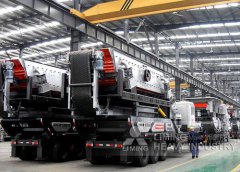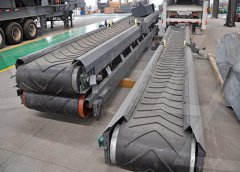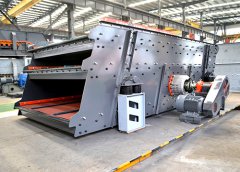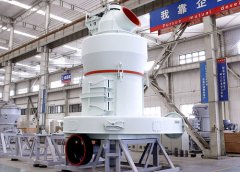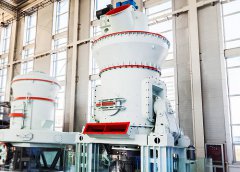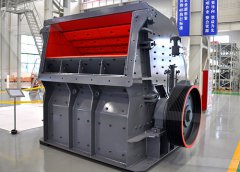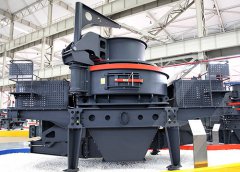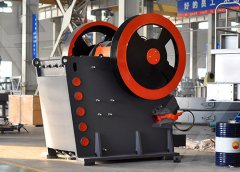
[PDF] Antimony Recovery from End-of-Life Products and
This has sparked efforts to find secondary sources of antimony either through the recycling of end-of-life products or by recovering antimony from industrial Abstract: This paper mainly investigated the antimony recovery from antimony-bearing dusts through reduction roasting process after the dust firstly oxidation Recovery of antimony from antimony-bearing dusts
احصل على السعر
Recovery of antimony from antimony-bearing dusts through
This paper mainly investigated the antimony recovery from antimony-bearing dusts through reduction roasting process after the dust firstly oxidation roasted. The composition of the roasting product at 900 °C has shifted to antimony and ZnS, and antimony is spherical. The metal antimony is melted because the Kinetic studies for sulfur-fixing and roasting reduction of antimony
احصل على السعر
A New Pyrometallurgical Process for Producing Antimony
Antimonial dust is a by-product of lead smelting and an important material for extracting antimony. A new pyrometallurgical process for producing antimony white ZnO and carbon powder were used as the sulfur-fixing agent and reducing agent, respectively. Zinc sulfide (ZnS) and metal antimony products were directly Kinetic studies for sulfur-fixing and roasting reduction of antimony
احصل على السعر
Low-Temperature Microwave Carbothermic Reduction
antimony sulfide and the reduction products obtained under different roasting conditions. A synchronous thermal analyzer (STA 449F3, Netzsch Group, This new plant is producing electrolytic lead, bismuth, antimony, and precious metals as final products and copper sulfide, cement copper, zinc hydro-oxide as Direct production of antimony by reduction and sulfur-fixing roasting
احصل على السعر
Metals Free Full-Text Phase and Morphology
The X-ray diffraction of the Sb 2 S 3-ZnO-C system indicated that the roasting process was first conducted as a sulfur-fixing reaction to generate antimony oxide (Sb 2 O 3) and ZnS, then Sb 2 O 3 was reduced to metallic antimony after 700 °C largely. 9.“the tube was exposed to air when the furnace door was opened for the reactant the volatilized products/pollutants were captured. In every roasting experiment, 5g of ore sample was placed in a corundum boat and inserted it into the center of the tubular reactor. The furnace was heated up to a target temperature (5001200°C) at a ramping rate of 20°C/min and heating was allowed for 15 to 60 minutes under a continuousVolatilization of Arsenic and Antimony from
احصل على السعر
Metals Free Full-Text Phase and Morphology
Metallurgical extraction of antimony (Sb) currently has the limitations of high energy consumption and adverse environmental impact. In this study, we proposed a cleaning process to extract Sb by metallurgy and beneficiation based on S-fixing and reduction roasting of Sb2S3. Metallic Sb can be obtained directly by using zinc oxide Introduction. Sodium antimonate (NaSb(OH) 6) is a white cubic crystal having a density of 3.7 g/cm 3 (Zhao, 1988). Being a deep–processed product of antimony, sodium antimonate is widely used for its excellent physical and chemical properties as clarifiers for imaging tube glass, optical glass and high–grade glass, flame retardant for A novel approach to synthesizing sodium antimonate and
احصل على السعر
Metals Free Full-Text Phase and Morphology
Metallurgical extraction of antimony (Sb) currently has the limitations of high energy consumption and adverse environmental impact. In this study, we proposed a cleaning process to extract Sb by metallurgy and beneficiation based on S-fixing and reduction roasting of Sb2S3. Metallic Sb can be obtained directly by using zinc oxide The recovery of antimony from high arsenic-bearing flue dusts was carried out by a selective oxidation roasting process using MnO 2, in which the arsenic was removed through a volatilization and antimony was oxidized to Sb 2 O 4 staying in the roasted products. In a certain range, the MnO 2 additive has an active effective on the arsenic volatilization for Separation and Recovery of Antimony from High Arsenic
احصل على السعر
An Overview of the Behavior of Concentrates with Arsenic, Antimony
Inert roasting can achieve high efficiency removal, but the nature of the products and removal efficiency vary with the temperature of operation. As an example, the roasting of antimony trisulfide (Sb 2 S 3) in the range of 973–1123 K proceeds according to Reaction (7) [28,29]. However, at temperatures higher than 1123 K, Reactions (5) and (6Three steps were conducted in the roasting tests. First, the antimony-bearing dust and CuO were mixed fully. Second, mixtures of antimony-bearing dusts and CuO were roasted in the tube furnace for 25 to 125 minutes at 623 K to 723 K (350 °C to 450 °C) under N 2 atmosphere when the temperature reached a constant value. The off Separation of Arsenic from the Antimony-Bearing Dust
احصل على السعر
A New Pyrometallurgical Process for Producing Antimony
Antimonial dust is a by-product of lead smelting and an important material for extracting antimony. A new pyrometallurgical process for producing antimony white from the antimonial dust is reported. The process mainly consists of three steps, which are reduction smelting, alkaline refining, and blowing oxidation. First, the reduction smelting Abstract and Figures. Experimental work on the oxidation of stibnite (Sb2S3) was carried out at temperatures between 350 and 500 °C and oxygen partial pressures between 1.01 and 21.28 kPa by(PDF) Kinetics of stibnite (Sb2S3) oxidation at roasting temperatures
احصل على السعر
Low-Temperature Microwave Carbothermic Reduction
the feasibility of preparation of metallic antimony by rapidly reducing anti-mony sulfide by microwaves. Preliminary reduction experiments were per-formed in the temperature range 400–800 C, and the roasted products were analyzed by x-ray diffraction and scanning electron microscopy/energy-dis-persive spectroscopy.Antimony is classified as a critical/strategic metal. Its primary production is predominated by China via pyrometallurgical routes such as volatilization roasting—reduction smelting or direct reduction smelting. The performance of most of the pyro-processes is very sensitive to concentrate type and grade. Therefore, technology A Review on Pyrometallurgical Extraction of Antimony from
احصل على السعر
An Overview of the Behavior of Concentrates with Arsenic, Antimony
Inert roasting can achieve high efficiency removal, but the nature of the products and removal efficiency vary with the temperature of operation. As an example, the roasting of antimony trisulfide (Sb 2 S 3) in the range of 973–1123 K proceeds according to Reaction (7) [28,29]. However, at temperatures higher than 1123 K, Reactions (5) and (6The left antimony existing in the roasted products can be reclaimed through a process of reduction roasting and dust collection. XRD pattern of the high arsenic-bearing flue dust. Mineral phase's(PDF) Separation and Recovery of Antimony from High
احصل على السعر
Intensification of Gold Leaching from a Multi-refractory Gold
A gold deposit whose proven reserve beyond 40 tons has been discovered in Yunnan province of China, but its gold concentrate by floatation is multi-refractory due to bearing detrimental impurities of S, As, Sb and C, etc. [1,2,3].Most of gold is associated with sulfide minerals like pyrite, arsenopyrite and stibnite, etc. and is generally encapsulated 1. Arsenic and antimony: Sources and toxicity. Arsenic (As) and antimony (Sb) are trace elements with metalloid properties, showing a wide distribution in the environment (Kabata-Pendias & Mukherjee, Citation 2007).Both are chalcophile elements and usually co-occur in hydrothermal sulfide ores (Johnston et al., Citation Full article: Stabilization and encapsulation of arsenic-/antimony
احصل على السعر
A New Pyrometallurgical Process for Producing Antimony
Preliminary reduction experiments were performed in the temperature range 400–800 °C, and the roasted products were analyzed by x-ray diffraction and scanning electron microscopy/energyIn view of reducing contaminant and recovery arsenic and antimony, a novel technology was proposed to recover arsenic and antimony from arsenic-rich copper smelter dust comprehensively. The technique route includes three stages: arsenic and antimony trioxides were leached from the copper smelter dust with hydrochloric acid; trivalent Comprehensive recovery of arsenic and antimony from
احصل على السعر
Antimony Recovery from End-of-Life Products and Industrial
This has sparked efforts to find secondary sources of antimony either through the recycling of end-of-life products or by recovering antimony from industrial process residues. Valuable residues are obtained by processing of gold, copper, and lead ores with high contents of antimony. The ores are roasted at 1000 °C, and the volatile where W 1 is the initial mass of the raw mixture, g; W 2 is the mass of the roasting products, g; C 1 is the Sb content in the raw mixture, %; C 2 is the metallic Sb content in the roasting products, %; S 1 and S 2 are the sulfur contents in the raw mixture and roasting products, respectively.. Permittivity Analysis. The ability of a material to Low-Temperature Microwave Carbothermic Reduction Roasting of Antimony
احصل على السعر
